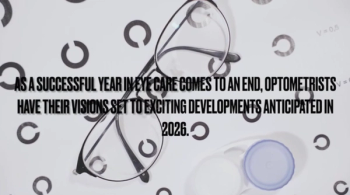
5 financial challenges ODs will face in 2016
Each year brings its own challenges, and 2016 will be no different.
Each year brings its own challenges, and 2016 will be no different.
So, we reached out to Optometry Times Editorial Advisory Board member John Rumpakis, OD, MBA, and Bryan Rogoff, OD, MBA, CPHM, director of doctor strategy for Pearle Vision, to ask them about what kinds of challenges they expect optometrists will encounter in the coming year.
Recent news:
Increasing deductibles
Increasing deductibles means costs are shifting more and more onto the shoulders of patients.
“Cost shifting is going to change how we have to communicate with our patients,” says Dr. Rumpakis. “I do think that it’s going to significantly affect our patients’ willingness to comply with what they need to do.”
When you’re trying to justify the cost of this diagnostic test or regular imaging to keep that glaucoma in check, but those services are not covered by the patient’s insurance-you’ll likely face some pushback. There’s a good chance some patients aren’t going to be very pleased to drop hundreds of dollars on a service if they don’t see or understand the direct benefit to them.
Recent news:
It’s all about communicating the value, a skill that not enough doctors have mastered, says Dr. Rumpakis.
“I think optometrists are among the most compassionate and caring healthcare providers out there-that is both our strength and it is our weakness,” says Dr. Rumpakis. “The weakness is that oftentimes we want to be our patients’ best friend instead of being their doctor. We tend to capitulate rather easily to what the patient wants to do rather than really trying to be their doctor and make sure that they understand the clinical needs.”
The demands of healthcare reform
Dr. Rumpakis says that healthcare reform mandates that doctors perform at a higher quality and volume with a lower price-and it’s not going to be easy. And while all healthcare providers will face this problem, he says that optometrists are especially ill equipped to manage these demands.
Related:
“I think that is going to be a challenge-not to optometry particularly-but to all healthcare practitioners,” says Dr. Rumpakis. “But the problem in optometry is that we don’t have the ancillary staff that is accessible to us like a general practitioner has.”
Recent news:
The costs of adding new members to your staff can add up in terms of salary, but if increasing head count allows you to see more patients and maintain your quality of care, it might be worth the investment. Dr. Rumpakis says that building the right team at your practice is a direct cost, but you have to measure the return on investment over a three- to five-year period to be able to get an appropriate cost analysis.
Consolidation, consolidation, consolidation
It seems that practically every week of 2015 brought news of yet one company buying up another, and the eyecare industry was no different.
“This past year has been a tremendous year for consolidation,” says Dr. Rogoff. “You have some heavy hitters out there who have been gobbling up a lot of stuff. That was the biggest thing that has been on my radar on for 2016: With everyone buying this, everyone buying that-what’s going to happen?”
Recent news:
One of the biggest was Essilor’s acquisition of Vision Source. (We explained what that deal would mean for eyecare providers-check that story out
“It’s nice to know that a company like Essilor is buying Vision Source and PERC as opposed to a venture capitalist group whose sole purpose is short-term profits,” says Dr. Rogoff, “instead of long-term things that would help out that buying group.”
And there are a number of other groups out there buying up practices left and right, so Dr. Rogoff says that independent doctors need to differentiate themselves. He says doctors need to focus on marketing and creating the best customer experience.
Increased competition from corporate opticals
Another big trend we saw in 2015 was the expansion of corporate opticals through partnerships with other brands.
Related:
Related:
“There has been such a movement-venture capitalists are seeing the value in optical, and obviously this was the year for that,” says Dr. Rogoff.
Access to patients
We hate to say it, but insurance plans will likely continue to be a major headache in the coming year, just as they were in the last year. Dr. Rumpakis says that access to patients will not only continue to be a problem, but that problem will likely grow over the next year.
“I think that we’re going to start to see greater narrowing of networks, meaning more focus on who the patients can see for their care,” says Dr. Rumpakis.
Bring on the New Year
Although the number of changes that have happened and will continue to happen in eye care can be daunting, Dr. Rumpakis says change doesn’t need to be a bad thing.
“As part of my personal philosophy, I think any time there’s disruption,” he says, “for as many negatives as there are, there are just as many opportunities. I think there are plenty of opportunities for people to thrive in this marketplace-but people have to be willing to change their paradigm, not just do things the way they’ve always done it.”
So bring it, 2016-ODs are ready for you!
Newsletter
Want more insights like this? Subscribe to Optometry Times and get clinical pearls and practice tips delivered straight to your inbox.













































.png)


